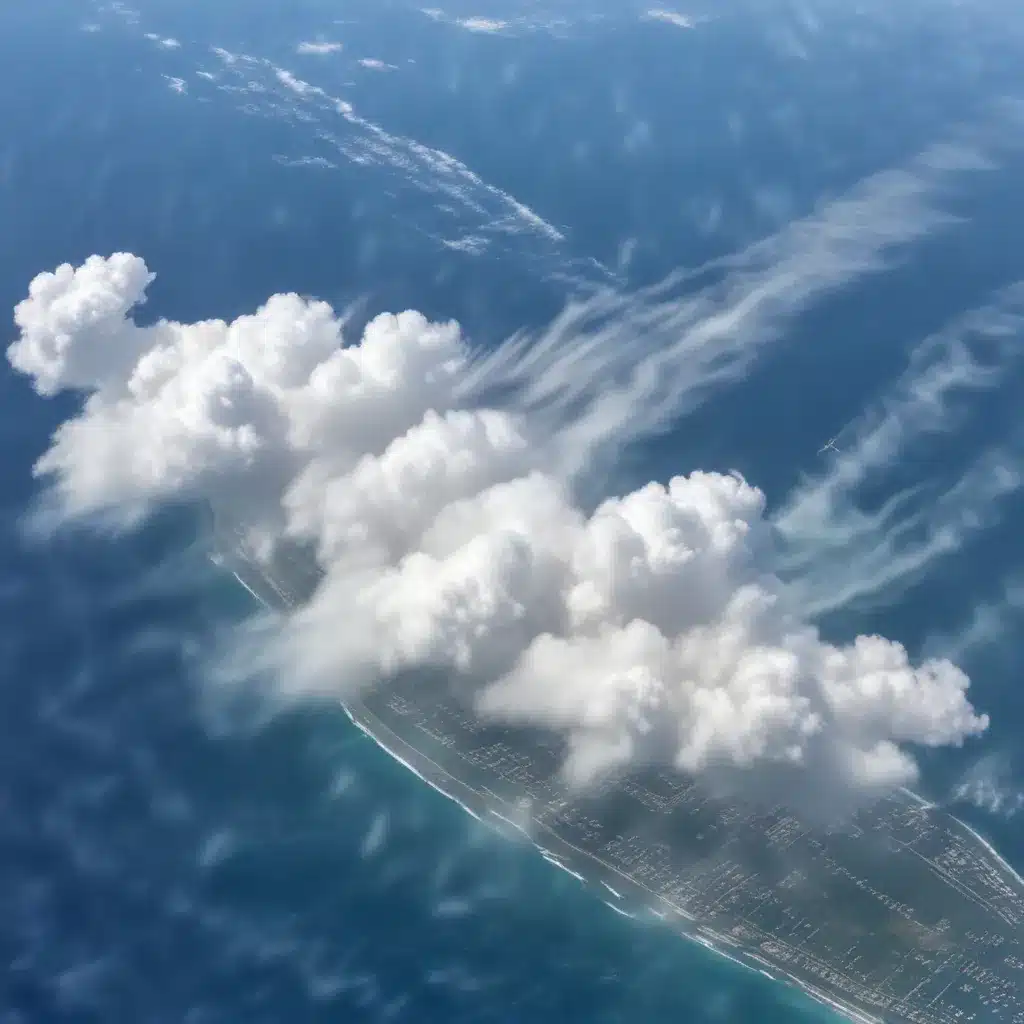
Introduction: Aerosols and Their Importance in Climate
Atmospheric aerosol particles affect Earth’s radiation budget in complex ways, both directly by scattering and absorbing incoming solar radiation and indirectly by influencing cloud formation and properties. The chemical composition of aerosol particles determines whether they scatter light back to space, leading to cooling, or absorb radiation and warm the atmosphere. Additionally, the size and soluble content of aerosol particles dictate their ability to act as cloud condensation nuclei (CCN), impacting cloud droplet number concentration and cloud albedo.
Despite the critical role of aerosols in the climate system, their effects remain highly uncertain, contributing the largest uncertainty in quantifying present-day climate change according to the Intergovernmental Panel on Climate Change (IPCC). Vertical profiles of aerosol and cloud properties are essential for improving climate models, particularly over the oceans where marine clouds are susceptible to small changes in aerosol concentrations.
Leveraging Uncrewed Aerial Systems (UAS) for Aerosol Observations
Crewed aircraft have been used for decades to characterize the horizontal and vertical distributions of aerosol and cloud properties relevant to radiative forcing. However, these measurements come at a high cost and require extensive logistical coordination. Uncrewed aerial systems (UASs) offer a more flexible and cost-effective solution, providing higher spatial resolution due to their slower flight speeds.
UASs have been used since the mid-2000s to measure various aerosol and cloud properties, including particle number concentration and size distribution, light absorption, aerosol optical depth, cloud droplet number, and effective radius. These measurements have been made with both vertical takeoff and landing (VTOL) UASs, such as quadcopters or hexacopters, as well as fixed-wing UASs.
The Development of a UAS for Aerosol-Cloud Observations
To address the need for improved observations of aerosol radiative effects in the marine boundary layer, a UAS has been developed for this specific purpose. The UAS is a Hybrid Quadrotor-fixed-wing aircraft designed for launch and recovery from a confined space, such as a ship deck. Two payloads, one for clear-sky and one for cloudy-sky conditions, house the instrumentation required to characterize aerosol radiative forcing effects.
The UAS has been deployed from both a ship and a coastal site for observations in the marine atmosphere. This technology is expected to greatly increase the temporal and spatial coverage of aerosol radiative effect measurements, complementing existing satellite and crewed aircraft observations.
Observations from the Southeast Atlantic
The UAS has been deployed in the southeast Atlantic, a region known for its vast, smoke-impacted cloud decks. These cloud formations, often drawing over the ocean from nearby deserts, play a critical role in reflecting solar radiation and regulating the Earth’s temperature and oceanic circulation patterns. However, the influence of the seasonal biomass burning aerosols that mix with these clouds has been understudied.
To address this knowledge gap, the UAS has been used to collect in-situ data on aerosol and cloud properties in the southeast Atlantic. The flights have been conducted from both a ship off the coast of Key West, Florida, and the Tillamook UAS Test Range in Oregon, near the coast.
Key Findings from the UAS Observations
The initial results from the UAS flights in the southeast Atlantic demonstrate the value of this observing platform for investigating aerosol-cloud interactions and their radiative effects.
Observations from the Ship-Based Deployments
During the ship-based deployments off the coast of Key West, the UAS was able to measure vertical profiles of aerosol properties, including particle number concentration and size distribution. The data showed decreasing particle concentrations with increasing altitude, with higher concentrations of smaller particles (< 0.2 μm) compared to larger particles.
Unfortunately, the maximum flight altitude allowed by the Certificate of Authorization (COA) was below the cloud base, preventing direct sampling of the cloud-impacted aerosol layers. However, the flights demonstrated the capability of the UAS to accurately return to the designated launch pad, landing within ± 0.36 m and ± 0.76 m of the target during the clear-sky and cloudy-sky payload flights, respectively.
Observations from the Coastal Deployments
The UAS flights from the Tillamook UAS Test Range, located about 10 km from the coast of Oregon, provided more extensive data on aerosol-cloud interactions. These flights were able to sample above the cloud layer, revealing the presence of an aerosol layer at around 2,550 m altitude with a fourfold increase in absorption compared to the layers above and below.
Chemical analysis of filter samples collected within this elevated aerosol layer indicated elevated levels of non-sea-salt potassium, a tracer of biomass burning. Trajectory analysis further confirmed that the sampled air mass was transported from areas with active wildfires along the Oregon coast.
The UAS also captured vertical profiles of cloud droplet number concentration, which were well-correlated with the particle number concentration in the size range of 0.03 to 2.0 μm. As expected, an increase in particle number concentration corresponded to a decrease in cloud droplet size, demonstrating the first indirect or Twomey effect of aerosols on clouds.
Future Developments and Applications
The initial results from the UAS deployments in the southeast Atlantic highlight the value of this observing platform for improving our understanding of aerosol-cloud-climate interactions. The clear- and cloudy-sky payloads have proven effective in characterizing the vertical distribution of aerosol properties and their influence on cloud microphysics.
Moving forward, the UAS platform will be upgraded to the larger L3Harris Fixed Wing VTOL Rotator, the FVR-90. This will allow for the integration of additional instruments, including upward- and downward-looking pyranometers to directly assess the connection between aerosol properties, cloud characteristics, and radiative effects.
Furthermore, the UAS technology developed for these aerosol-cloud observations has the potential for broader applications, such as marine mammal assessments, harmful algal bloom monitoring, and investigating the radiative impacts of forest fires. By leveraging the flexibility, lower cost, and higher spatial resolution of UASs, researchers can continue to expand our understanding of the complex interactions between aerosols, clouds, and climate in the marine environment.
The data collected during the UAS deployments in the southeast Atlantic are publicly available at https://data.pmel.noaa.gov/pmel/erddap/search/index.html?searchFor=Tillamook2022, providing a valuable resource for the broader scientific community.












